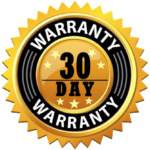Budget vs. Long-Term Value: Making Smart, Cost-Effective Safety Investments
When searching for portable safety barriers or barricades, it’s natural to focus on price. But the cheapest option rarely offers the best value—especially when safety, liability, and long-term durability are on the line.
A smart investment strategy balances initial cost, lifecycle durability, compliance, and operational efficiency. This post will help you avoid false savings and invest in solutions that protect people and your bottom line.
The Danger of Buying Based on Price Alone
It’s easy to justify cutting costs on temporary equipment. But poorly made or underperforming barricades can lead to:
- Frequent replacements
- Maintenance downtime
- Safety failures or accidents
- Non-compliance fines
- Damage to your organization’s reputation
What looks like a “deal” can quickly turn into an expensive mistake.
Total Cost of Ownership (TCO)
Instead of just considering the sticker price, evaluate the total cost of ownership over the product’s lifecycle. Factors to include:
- Durability: Will it last 1 season or 5 years?
- Storage & Transport: Can it collapse, stack, or roll to reduce labor and vehicle space?
- Setup Time: Can one person deploy it in minutes, or will you need a crew?
- Maintenance: Are parts replaceable? Does it resist weather and wear?
Paying more upfront for a rugged, easy-to-use barrier often pays for itself quickly through reduced labor, longer lifespan, and fewer replacements.
Examples of Hidden Savings
Let’s break down a real-world example:
| Option | Upfront Cost | Lifespan | Setup Time | Cost Over 3 Years |
| Low-cost Plastic A-Frame | $70/unit | 1 year | 2-person | $210 + labor |
| Mid-range Folding Barrier | $190/unit | 3–5 years | 1-person | $190 (lower labor) |
Conclusion: Even though the A-frame appears cheaper, it needs to be replaced annually, requires more labor to deploy, and may fail in outdoor settings—raising hidden costs. A better-quality collapsible barrier offers better ROI.
Buy Once, Buy Right
Here are smart ways to stretch your safety budget:
- Start with core units that can cover multiple environments
- Modular systems allow expansion over time
- Choose vendors that offer warranties or replacement parts
- Look for features that reduce storage space, labor, or setup complexity
Investing in quality, proven barriers doesn’t just save money—it improves safety, ensures compliance, and boosts operational confidence.
FAQs
Q1: What’s the most common mistake when budgeting for barricades?
A1: Buyers often treat barriers as disposable and focus only on upfront cost. This leads to frequent replacements and compliance issues. It’s smarter to look at durability and total cost over time.
Q2: How do I justify a higher-cost barrier to my supervisor or procurement team?
A2: Present a total cost of ownership analysis that includes lifespan, labor savings, storage efficiency, and reduced risk. Many organizations find that better barriers quickly pay for themselves in real-world use


